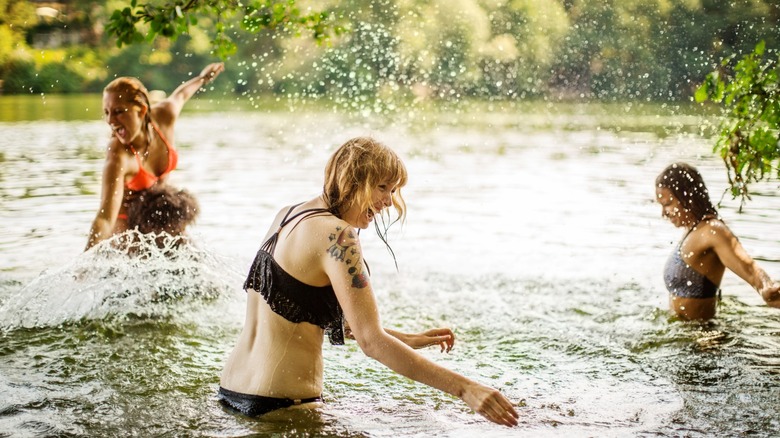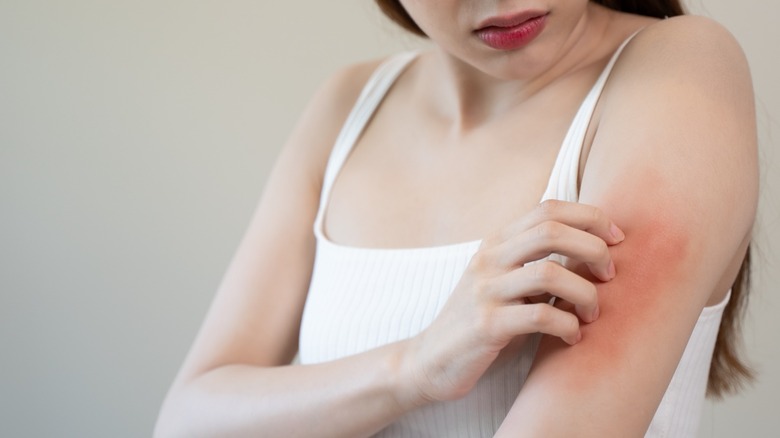The Disturbing Truth About 'Swimmers Itch' And How You Can Avoid Catching It On Your Lake Or River Trip
It's a common scene: You're spending the day at your favorite swimming hole, lake, or beach — taking refreshing dips and wading, splashing, and swimming around. But a few hours after emerging from the water, you feel a slight tingling sensation, then an uncontrollable itch. What's this? You see redness and perhaps some swelling. "Maybe I was bitten by something," you think. But most likely, you have swimmer's itch, or cercarial dermatitis — an allergic reaction to microscopic parasites that live in natural bodies of water. Great, like we didn't already have enough to worry about at the beach, such as the most dangerous types of waves.
"Microscopic parasites" sound alarming, but swimmer's itch isn't contagious or life-threatening. In most cases, it also doesn't require medical treatment. The itchiness can be very uncomfortable, though, and progress to a burning sensation – some people report it feeling like a mosquito bite multiplied a hundredfold. Resist that compelling urge to scratch, as breaking the small pimples or blisters that often accompany the condition can lead to bacterial infection.
Just like there are ways to avoid scary encounters with sharks while swimming, there are also ways to avoid getting swimmer's itch. One easy option is to simply stick to well-chlorinated pools instead of natural bodies of water. But for nature lovers for whom a pool just won't do, you can reduce your risk by choosing a different lake or pond, especially if one is known to have water issues.
Understanding swimmer's itch and ways to prevent and treat it
Ironically, the microscopic parasites (called schistosomes) that cause swimmer's itch don't intentionally target people. They live inside certain water-dwelling creatures such as birds and geese and are released into the environment through the birds' droppings. The parasites hatch in the water and swim in search of snail hosts. After developing and growing inside the snail, they leave and start looking for a bird or mammal to infect. Burrowing into human skin is a mistake because they can't survive there and will die almost right away.
The parasites live in both freshwater and saltwater environments but are found in higher concentrations in shallow areas near shore, which leads to more cases of swimmer's itch in children. Although showering won't help if the larvae have already penetrated the skin, thoroughly showering and toweling off immediately after exiting the water can help prevent them from doing so. If you're a bird lover, try not to feed or otherwise attract birds to areas where people swim. You can also help unsuspecting swimmers by urging health authorities to place warning signs along shorelines where swimmer's itch is a problem.
Fortunately, reactions associated with swimmer's itch typically last only two to five days. The Centers for Disease Control and Prevention recommends several treatments to abate symptoms, such as applying corticosteroid cream, bathing in Epsom salts or baking soda, and taking a colloidal oatmeal bath. So, consider including those items to your ultimate packing list for a successful beach trip.

